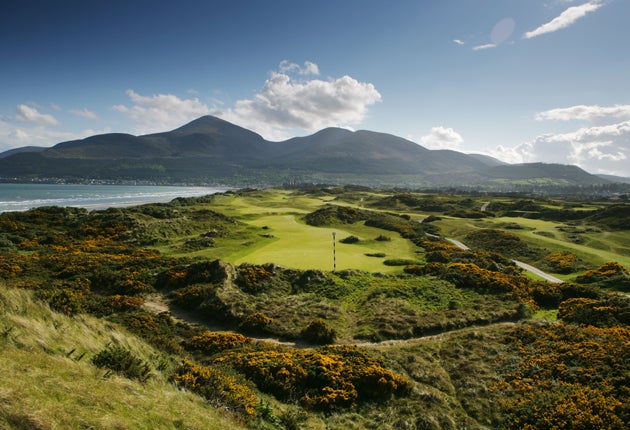Northern Ireland's national park back in the wilderness
Mourne Mountains unprotected, as UK marks 60 years of national parks

From the desolate snowy peaks and ancient forest of the Cairngorms in Scotland to the bleak, wild open spaces of Dartmoor in Devon, for the past 60 years Britain's national parks have protected our most valuable landscapes while enriching the lives of the people who enjoy them.
A week of celebrations across Britain's 14 most protected landscapes begins tomorrow, organised by the National Parks Authority. But the events are marred by the fact that plans for Britain's newest national park, the first in Northern Ireland, have been scuppered by a row.
Northern Ireland is the only part of the UK that does not have a national park, despite breathtaking countryside and seven years of consultation over plans for 220 square miles of the Mourne Mountains which were chosen in 2002.
All of that work has been quietly shelved, causing consternation among environmentalists. Edwin Poots, the new Northern Ireland environment minister, has restarted the long, drawn-out process of identifying which part of Northern Ireland should be designated a national park. The legislation to create this park will, however, be introduced in September. "We need to think carefully – and to debate fully – what a Northern Ireland National Park should be like," he said.
The news has dismayed supporters of the park, who believe that debate has already taken place.
Martin Carey, chief executive of the Mourne Heritage Trust, believes a national park will help the area to cope with its annual 1.4 million visitors. "The environmental issues are quite urgent," he said. "We have a huge problem with litter, congestion and erosion. A national park would attract more visitors, but would also put the management in place to cope with them. We have one ranger for an area the size of the New Forest. We needed to be a national park five years ago, and can't afford to wait another five years."
The Mournes' 50,000 residents, however, fear a national park will price them out of the area, while farmers are worried about access to land.
Councillor Seamus Doyle, who represents the area, said the original decision to choose the Mournes was too hasty. "I don't think the people who live here and the landowners were consulted properly," he said. "National parks in England are very different. Not many people live in them. Thousands of people live in the Mournes. We need a Celtic model for a national park that is suited to the people who live here."
This week the existing national parks will host a series of events, from Roman re-enactments and archaeological digs to solar-powered boat rides. Work is also continuing on creating the South Downs National Park in Sussex, which will be officially designated in 2011, after more than a decade of planning and debate, bringing the total number of parks to 15, four of which – Loch Lomond and the Trossachs, the Cairngorms, the New Forest and the South Downs – will have been designated since 2000.
Mr Carey is convinced the Mournes, eventually, will join them. "We believe that when the consultation is done the Mournes will still come out as the most appropriate area because of the landscape and visitor numbers," he said. "The original study was done in 2002, and not a lot has changed. If anything, the argument for the Mournes is even stronger."
Subscribe to Independent Premium to bookmark this article
Want to bookmark your favourite articles and stories to read or reference later? Start your Independent Premium subscription today.

Join our commenting forum
Join thought-provoking conversations, follow other Independent readers and see their replies